- Home
- Winston Groom
The Aviators Page 4
The Aviators Read online
Page 4
The Sioux City Speedway was wretched. A two-mile oval racecourse was built across the Missouri River from the city, so it was actually in Nebraska, cut out of a large cornfield, and instead of using boards, concrete, or bricks as they did at Indianapolis, the Sioux City promoters tried to create a track out of dirt and thirty thousand gallons of crude oil, which was supposed to solidify into a smooth racing surface. It did no such thing. When it was dry the cars broke up the congealed overlay into rock-hard chunks that often flew back at the drivers with terrific force. The drivers called it “gumbo.” Rickenbacker had fabricated a wire-mesh screen to protect himself and his drivers and mechanics from it, but it wasn’t foolproof, as he soon found out.
The Sioux City Race Week began on an ominous note. On June 28 in far-off Sarajevo, Bosnia, a Serbian assassin shot and killed Archduke Franz Ferdinand of Austria. The event was scarcely noticed in the American press but would have a profound effect on the life and career of then twenty-three-year-old Eddie Rickenbacker.
Promoters of the Sioux City race had forecast as many as ten thousand spectators would show up, but when fully fifty thousand unruly race fans arrived neither the sponsors nor the city were prepared for the influx. The weather was firecracker hot when high rollers from Chicago disembarked from their private railcars and headed for the nearest saloons, which were crammed with everyone from royalty to riffraff. The Iowa Anti-Saloon League and a host of indignant evangelists set up an enormous tent to convert the sinners and buttress the faithful. But all good intentions were swamped by the hard-drinking, hard-gambling mob, which included cardsharps, prostitutes, reporters, pickpockets, and the morbidly curious, as well as the aforesaid swells, many of whom slept a dozen to a room, or in hotel lobbies, or as a last resort on sidewalks or in the woods, like hoboes.
By day and by night, along with the boozing, they laid odds on the racing field, which included such stellar drivers as “Wild Bob” Burmanb—whom the bookies were giving odds of 5 to 1—Howdy Wilcox,c Spencer Wishart,d Billy Chandler,e and the ubiquitous Barney Oldfield. The relatively little-known Rickenbacker was supremely confident in what he called “a golden period” in his life, while the gamblers put his chances of winning at 8 to 1.
Soon after the gun went off Rickenbacker and his mechanic Eddie O’Donnellf were proceeding as planned, armed with the dried-out bat heart. Their car was not as fast as some of the others, but Eddie made up for it on the turns, which he had thoroughly mapped out in his mind, as usual.
Toward the end of the race Rickenbacker was in a two-man duel for the lead with his friend Wishart, who was driving one of the cars that was faster than the Duesenberg on the straightaways. As Wishart pulled ahead he created a virulent stream of gumbo that spattered the Duesenberg from grille to windscreen and often bounced lethally overhead, causing the drivers to duck.
With five laps to go, Rickenbacker regained a slight lead, but when he looked at the oil gauge he noticed the pressure had fallen. He nudged O’Donnell as they went into a curve, but when they came out on the straightaway the pressure was even lower. “What in the hell is the matter with Eddie?” Rickenbacker thought, but when he managed to glance over his heart sank. The mechanic was sprawled in his seat, either dead or unconscious from a big chunk of gumbo that had struck him in the forehead.
Rickenbacker made a decision not to stop, and on the next stretch he leaned over himself and made a few pumps of the oil bulb, which was good enough until O’Donnell at last came to and was able to resume his duties. They won the race by forty-eight seconds, and with the $10,000 Eddie won plus $2,500 from a third-place win by another Duesenberg racer the team checked into first-class rooms in the best hotel in town and dined on meals fit for a king.
Rickenbacker had now broken into the big-time race car circuit as a serious player, and his photograph, grinning and mud-spattered, was flashed on sports pages from coast to coast and foreign lands as well. Also, as was the custom of the day, sportswriters gave Rickenbacker half a dozen sobriquets, most of them a nod to his Germanic-sounding name: “The Dutch Demon,” “Baron Von Rickenbacher,” the “Big Teuton,” and so forth. A racing writer even published a two-stanza poem about Eddie in the magazine Motor Age in which he referred to him as “That Deutscher, Rickenbacher”—all of which would cause Eddie a good deal of trouble before long.
RICKENBACKER PLACED IN THE MONEY in two other major races that season, and two minor ones as well, and was rated the sixth best driver in the country. This accolade was tempered by the death of Spencer Wishart, who was killed a few weeks after the Sioux City event when he smashed into a tree on the fourteenth lap of a race in Elgin, Illinois.
When the season was done Rickenbacker looked to his immediate future. He liked the Duesenberg team but had lost confidence in the company’s ability to build a car that could withstand the rigors of a long race. After Sioux City, on several occasions he was forced to drop out of races because of mechanical troubles. Also there was the constant worry of financing.
Eddie left Maytag-Mason Motors in November 1914 and took one of the big Peugeot racers he had come to admire to California to drive in the three-hundred-mile Point Loma race in San Diego on Thanksgiving Day. He remained in California and in January 1915 he won the Los Angeles Grand Prize and the Vanderbilt Cup—which was held in San Francisco that year—and established new records in winning at Providence, Sioux City, and Omaha, where his average speed was 93 miles per hour. He continued to rely on the superstition of tying a dead bat’s heart to his finger, the bats being supplied by his brother Albert, who would ship them to him in a cigar box via rail express.
Eddie went on to win a second championship at the Sioux City Speedway, but tragedy struck halfway through the race. Eddie was attempting to pass Charlie Cox, who moved over as required, but then swerved back to avoid another car, causing Rickenbacker’s Duesenberg to slightly strike Cox’s left rear wheel. It was enough to send Cox’s Ogden Special rocketing out of control, smashing through the fence, flipping over, and bouncing high in the air before coming down to crush both Cox and his mechanic, killing them instantly.
After that incident, Eddie took stock. He woke up one night in his hotel room with a terrible dream that he was in the midst of a crash from which there was “no possible escape.” Nothing he’d ever experienced was so terrifying, and as he sat up in bed shaking he began to recount and relive his many brushes with death. Then it began to dawn on him just how fortunate he was that although he had come within an eyelash of death more times than he could count he was still alive.
This led to another epiphany, a revelation that the Lord had somehow saved him for “some special purpose,” though he knew not what. Nevertheless he decided that he must prepare himself both spiritually and physically for the challenge.7
That night, Rickenbacker said sixty years later, and every night thereafter, when he was able, he got down on his knees to pray, as his mother had taught him. To strengthen his body, Rickenbacker swore off cigarettes and alcohol (a pledge that was not long maintained) and developed a special physical exercise regimen performed for fifteen minutes every morning when he woke and every night before he went to bed. He kept this up, he claimed, well into his seventies.
He also designed a strict self-improvement program, starting with the practice of carrying with him every day a pocket dictionary to look up words gleaned from men in “higher positions,” whom he had begun to meet as he worked his way up the race car circuit. For some reason, he also gave himself a middle name—which his parents had somehow neglected to bestow upon him—“Vernon,” because he liked the sound of it and the way it looked on paper. And he drew up a whole “booklet of rules,” a sort of life guide he swore to abide by, beginning with: “Always conduct yourself as a gentleman.”
These were fairly reasonable resolutions, and they reflected the one overarching feature of Rickenbacker’s character to this point, which was an almost superhuman determination to succeed at whatever he decided to do. Armed with all this p
ositive new philosophy, Rickenbacker now set out to become the best race car driver in the world.
IN 1916 EDDIE TORE UP THE TRACKS, and one of his specialties was the somewhat dubious tactic of purposely skidding into sharp turns on dirt courses in order to stir up an impenetrable cloud of track dust that temporarily blinded the drivers behind him and caused them to slow down. Barney Oldfield was particularly indignant over this ploy, but Rickenbacker remained self-possessed and wore with pride the additional moniker “King of Dirt,” making jokes with newspaper reporters about “leaving ’em in my dust.”
He had so far been faithful to his resolutions; after work or a race, instead of carousing in the saloons with the other drivers, Eddie went back to his hotel and generally ordered supper from room service with some of his crew. Unlike many of his comrades he did not go for loud clothing. Instead, he was soft-spoken and courteous, and off track he wore conservative business suits. He kept away from crowds, avoided publicity and women, wanting no distractions from his racing. Nevertheless, he was a target for hundreds of mash notes from female fans and was constantly dogged by “engagement” rumors. For example, he received this telegram from a Miss Irene Tams, a movie actress whose latest hit, Lola, was described thusly: “With the help of an electric ray machine a scientist brings back to life his daughter killed in a car crash, but fails to revive her soul.” From the Seminole Hotel in Jacksonville, Florida, she telegraphed Rickenbacker proposing a “leap year marriage” to him.g
Eddie replied with a profusely flattering letter that ended this way, however: “A women is only a woman, but my soul mate is a racing car.”8
Eddie changed race cars again that year—to Maxwells—in his quest to find an automobile that would run consistently through an entire race without breaking down. For $25,000 he bought four race cars and set up a syndicate consisting of the owners of the Indianapolis 500 racetrack.
He streamlined the Maxwells from the tires up; engines were overhauled and all extra weight removed, giving the cars an extra 10 to 12 miles per hour. Eddie designed a special cowl to protect drivers in rollovers. He paid the mechanics and other team members on an incentive basis from the net winnings. Days were long and tedious—seven a.m. till after dark—and Eddie introduced a phonograph to the garage so that every time work began to drag he would put on a stirring march or other fast-time music.
Out of thirteen major races that Eddie’s team entered in 1916, his Maxwells won seven. Counting revenues from sponsors and exhibitions the profit after expenses was $78,000;h that total was not counting $60,000 Eddie had personally won. Late in the season Eddie decided to go to California to race with the Duesenberg team in Santa Monica for the American Grand Prize. There he had two fateful encounters that would change his life forever.
The first occurred a few days before the race when he was driving through Riverside, in the Moreno Valley about halfway between Los Angeles and Palm Springs, and he spotted a flying machine parked beside a hangar. On an impulse, Eddie turned in because he’d never seen an airplane up close. As he was peering into the cockpit, the plane’s owner, a man about his own age, emerged from the hangar and immediately recognized him from the newspapers. He introduced himself as Glenn Martin.i The plane, Martin said, was a two-seat “bomber” he had designed for the U.S. Navy, and he said to Eddie, “Would you like to take a ride?”
Death-defying race car driver that he was, Rickenbacker had a fear of heights tracing back to the flying umbrella bicycle fiasco of his childhood. Even looking down from tall buildings made him dizzy. Also, at that point, Eddie held the airplane in low esteem. Barnstormers and stunt fliers were crashing and dying with such gruesome regularity that most Americans considered the flying machine “a deathtrap.” One would almost automatically have expected him to say no.
Instead, he said, “Sure,” and thus began his lifelong affair with aviation.9
Once they were airborne Eddie had to screw up the courage to look down from the cockpit. The sensations of dizziness and fear were gone. Fascinated, Eddie marveled at being aloft, floating high above the roads and fields of the valley, while Martin hollered back, pointing out sights and landmarks above the engine’s roar. The landing unnerved Rickenbacker, because the ground had seemed to come up so swiftly, but he quickly got over it. They had been up for about thirty minutes and Eddie was so excited over the experience he couldn’t resist telling Martin about his vertigo, and wondering why it hadn’t occurred on the flight.
“It’s because there’s nothing to judge height by,” Martin told him. “There’s no edge to look over.”
The encounter with Glenn Martin was quickly followed by another chance meeting freighted with possibilities. Again, Eddie was driving through the countryside near Los Angeles when he passed by a cow pasture in which sat a single-seat U.S. Army biplane with a pilot standing beside it despondently staring at the engine. Eddie pulled over to see what could be done.
The pilot was a Major T. F. Dodd of the Army Air Service, which was then so lowly regarded by the military army brass that it was part of the Signal Corps. Dodd explained that he’d had to put the plane down in the pasture because its engine had lost power. “It runs,” Dodd said unhappily, “but does not deliver enough power to keep aloft.”
He asked Eddie if he knew anything about engines.
Eddie said he did.
Dodd spun the prop and the engine caught. Eddie quickly determined that the problem lay in the ignition system; upon further inspection he saw that a coupling had slipped off the magneto, which powered the plane’s electrical system. Eddie reinstalled the coupling and the engine performed splendidly. Rickenbacker didn’t know it but he’d made a friend who would change his fortunes at a most opportune moment.
* (re-vers-moh) “Suddenly zooming up, then throwing the airplane over on to one wing, and kicking the tail around to the rear,” i.e., reversing direction.
† In today’s money, worth $91.20.
‡ Glass blowers had an exceptionally high mortality rate, the causes of which were not well understood at the time. It was later attributed to toxic chemicals in the glass, especially colored glass.
§ Roughly $250,000 in today’s money.
‖ A cousin to the Firestone who started the motor tire empire.
a Harroun eschewed having a mechanic ride with him—a first for this race—and in his place installed a gadget that proved to be a rearview mirror, according to Eddie, “The first one ever seen.”
b Burman was killed in a racing accident in 1916.
c Wilcox did not survive a race car crash in 1923.
d Wishart died in a crash the following September.
e Chandler was killed on the racetrack in 1924.
f O’Donnell died in a racing wreck in 1920.
g It was a custom of the times that in leap years women were permitted to propose to men.
h About $1.5 million today.
i Glenn L. Martin was president of the newly formed Wright-Martin Aircraft Company, founded with Wilbur and Orville Wright. Over the years it would merge into the giant Martin Marietta and eventually the Lockheed Martin aeronautics and aerospace conglomerate.
CHAPTER 3
THE MAN WITH THE OUTSIDE LOOP
ON THE FOGGY MORNING of September 24, 1929, at Mitchel Field on New York’s Long Island, U.S. Army First Lieutenant James H. “Jimmy” Doolittle, already one of the world’s most famed aviators, strapped himself into the seat of a Consolidated NY-2 U.S. Navy training plane, stuck his head under a canvas hood, and, with no view whatsoever of the outside world, taxied, took off, flew around, and landed, using nothing but the crude navigational instruments beneath his shroud. By this singular, decisive feat Doolittle advanced aviation into the modern age, in which weather would no longer be a controlling factor in flying.
Doolittle started a colossal revolution; previously, pilots had been taught to mistrust instruments and fly by their instincts, to get the “feel of the plane”—in other words, to fly by seat of the pants.
Pilots invariably let bravado get the better of them, and thousands of aviators worldwide perished in fog, rainstorms, blizzards, cloud banks, and dark of night during the nearly quarter century after the Wright brothers’ historic first flight.
Those were the days when flying was among the most dangerous of occupations. For example, thirty-one of the forty pilots hired by the U.S. Postal Service to deliver airmail between 1919 and 1926 were killed in crashes. “It was pretty much a suicide club,” one of them remarked later. Charles Lindbergh was one of these airmail pilots, but somehow he escaped death or serious injury, though he had to bail out of a crashing plane more than once. The most perilous aerial affliction was vertigo, which often comes on when a pilot cannot see the ground, usually because of fog or clouds. It confuses the senses, leading the flier to mistrust his instincts and his instruments (if he has them) and become unbalanced, sometimes thinking he is turning right when he is turning left, or climbing when he is actually losing altitude or stalling.* By 1929 a handful of farsighted flight pioneers had concluded that “aviation could not progress until planes could fly safely day or night in almost any kind of weather.” Foremost among these was Dr. Jimmy Doolittle, recently armed with a PhD in aeronautical engineering from the Massachusetts Institute of Technology.
In 1928, already world famous as a test pilot and aerial racer, Doolittle was lent by the army to head up a group of fliers and scientists financed by Guggenheim money at Mitchel Field† near Hempstead, Long Island, to investigate and provide solutions for “blind flying conditions” and “aircraft spin control.”
The day after Doolittle made his flight, the story’s headline in the New York Times read, “Blind Plane Flies 15 Miles and Lands: Fog Peril Overcome.” That was a bit of a stretch, but it would not be off the mark to say that Doolittle’s feat was a giant leap forward for the viability of commercial aviation.

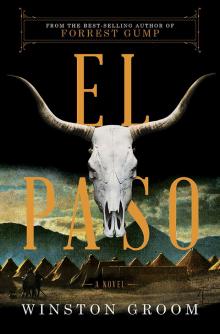 El Paso
El Paso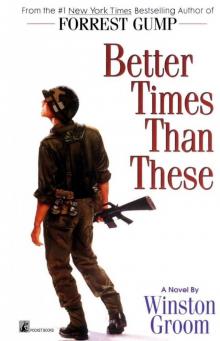 Better Times Than These
Better Times Than These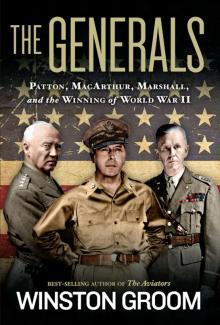 The Generals
The Generals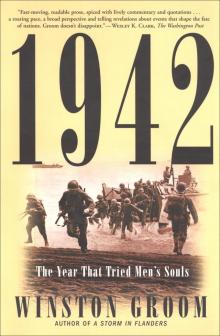 1942: The Year That Tried Men's Souls
1942: The Year That Tried Men's Souls Forrest Gump
Forrest Gump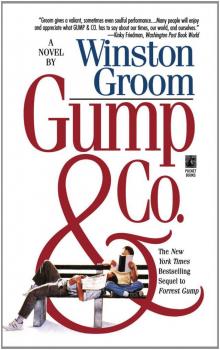 Gump and Co.
Gump and Co.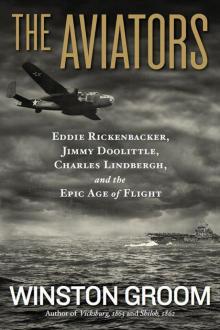 The Aviators
The Aviators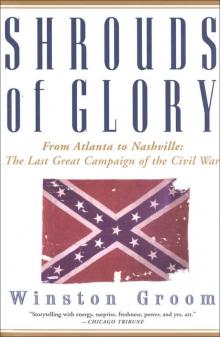 Shrouds of Glory
Shrouds of Glory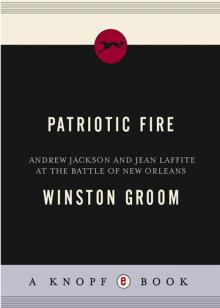 Patriotic Fire
Patriotic Fire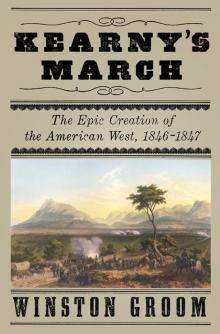 Kearny's March
Kearny's March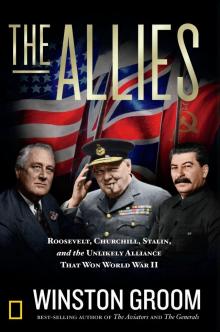 The Allies
The Allies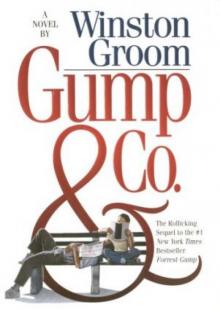 Gump & Company fg-2
Gump & Company fg-2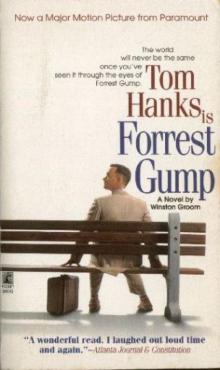 Forrest Gump fg-1
Forrest Gump fg-1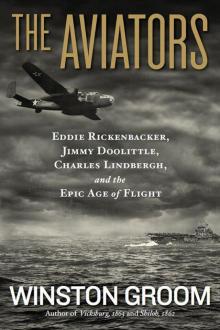 The Aviators: Eddie Rickenbacker, Jimmy Doolittle, Charles Lindbergh, and the Epic Age of Flight
The Aviators: Eddie Rickenbacker, Jimmy Doolittle, Charles Lindbergh, and the Epic Age of Flight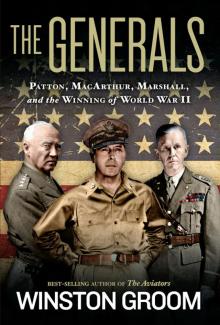 The Generals: Patton, MacArthur, Marshall, and the Winning of World War II
The Generals: Patton, MacArthur, Marshall, and the Winning of World War II